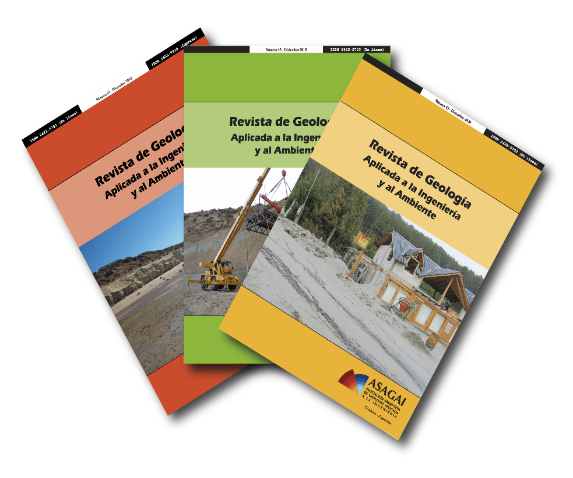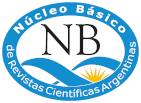Study of flooding in the city of Morelia Michoacan, Mexico
DOI:
https://doi.org/10.59069/57k7zn56Keywords:
River floods, Rio Grande, Rio Chiquito, Morelia, HEC-RASAbstract
This paper focuses on the analysis of the degree of flooding vulnerability to which the city of Morelia is usually exposed to. Our concern arises due to the fact that every rainy season several neighborhoods in Morelia tend to get flooded, especially in the northern part of the city which the “Rio Grande” runs through. The southeastern part of the city, through which the “Rio Chiquito” reaches into, is often affected as well. Heavy rainfall in the upper part of the basin causes great flows, which in turn endanger the neighborhoods that are located near these rivers. The runoff of both rivers, “Grande” and “Chiquito”, was analyzed in order to create a computer-generated model using HEC-RAS to evaluate the displacement of their free surface waters under permanent moving conditions in each river as well as the geometric conditions of their transversal sections. The amount of water flow was also measured taking into consideration the bridges that rest across them without overlooking the geometry of such structures. Having gathered all these data, the most vulnerable spots were identified and some simple preventive measures and actions were proposed. Such measures and actions will help diminish or even eliminate flooding risks for the settlements nearby these two main innercity water streams.
References
Arreygue Rocha E. 1998. Le condizioni di pericolosità idrogeologica nella città di Morelia, Michoacan, Messico. Tesi di Dottorato. Università degli Studi di Firenze, Italia. 171 pp.
Arreygue Rocha E. y Garduño-Monroy V.H. 2004. Eventos excepcionales e inundaciones en la ciudad de Morelia, Michoacán. Revista Ciencia Nicolaíta, UMSNH. No. 39. 47-60 pp.
Arreygue Rocha E., Alcalá Ochoa S. y Garduño-Monroy V.H. 2005. Estudio geológico, hidrológico, hidráulico y topográfico de las zonas potenciales a inundaciones de las colonias Jardines de Santiaguito, Jaime Nuno y Carlos Salazar, en el municipio de Morelia, Michoacán. Informe técnico.29 pp.
Bedient P.B. and Huber W.C. 2002. Hydrology and floodplain analysis. Prentice Hall. 1-165 pp.
Chow Ven Te. 1998. Hidráulica de canales abiertos. McGraw-Hill. 87 – 124 pp.
Chow Ven Te, Maidment David R., and Mays Larry W. 1994. Hidrología aplicada. McGraw-Hill. 131 – 179, 391 - 409 pp.
CNA. 2010. Comisión Nacional del Agua. Delegación Michoacán. Centro meteorológico de Morelia.
Díaz Bautista A. 2008. Un análisis económico para México del Protocolo de Kyoto. Desarrollo Local Sostenible. Vol. 1 No. 1. 20 pp.
EIRD. 2004. Estrategia Internacional para la Reducción de Desastres. Vivir con el riesgo. Informe mundial sobre iniciativa para la reducción de desastres (EIRD/ONU). 1-19 pp.
French R.H. 1993. Hidráulica de canales abiertos. McGraw-Hill. 111 – 163 pp.
IMTA. 2004. Estudio del manejo de aguas pluviales en la zona metropolitana de Morelia, Estado de Michoacán. Instituto Mexicano de Tecnología del Agua. 140-153 pp.
INEGI. 2010. Instituto Nacional de Estadística y Geografía. Censo de población y Vivienda 2010.
INEGI. 2005. Instituto Nacional de Estadística Geográfica e Informática. Modelo digital de elevación.
Landa R., Magaña V, y Neri C. 2008. Agua y clima: elementos para la adaptación al cambio climático. SEMARNAT, México. 135 pp.
Linsley Ray K., Kohler Max A. y Paulus Joseph L.H. 1990. Hidrología para Ingenieros. McGraw-Hill, Segunda edición, 386 pp.
Magaña Rueda V. 2004. Los impactos del Niño en México. Centro de la Atmósfera, UNAM, Secretaría de Gobernación, México. 229 pp.
Magaña R. V. 1999. Los impactos de “El Niño” en México. Centro de Ciencias de la Atmósfera UNAM, Dirección General de Protección Civil, Secretaría de Gobernación, México. 229 pp.
Magaña V., J. Vázquez, J. L. Pérez y J. Pérez. 1998. Impact of El Niño on precipitation in Mexico. Geofísica Internacional. Vol. 42. Núm.. 3. p. 313 – 330.
Moisello U. 1985. Grandezze e fenomeni idrologici. La Goliardica pavesel. Pavia, Italia. 283 pp.
Sarh. 1985. Secretaría de Agricultura y Recursos Hidráulicos. Estudio hidrológico, Obras de protección a la ciudad de Morelia, Michoacán, cauce del Río Chiquito de Morelia. Dirección general de irrigación y drenaje, Subdirección de programas y estudios específicos, Coordinación general centro, Residencia estatal Michoacán p 100 pp.
SEDENA. 2010. Secretaría de la Defensa Nacional. Centro Meteorológico 21ª Zona Militar, Morelia, Michoacán, México. Informe inédito.
UNESCO 2007. Informe sobre desarrollo humano2007-2008, La lucha contra el cambio climático, Crisis climáticas: riesgo y vulnerabilidad en un mundo desigual. 71-108 pp.
US Army Corps of Engineers (USACE). Hydrologic Engineers Center. HEC-RAS 3.1.User’s manual, 148 pp. and Hydraulic reference manual, 130 pp.
Downloads
Published
Issue
Section
License
Copyright (c) 2015 Journal of Engineering Geology and the Environment

This work is licensed under a Creative Commons Attribution-NonCommercial-ShareAlike 4.0 International License.
Attribution - Non-Commercial - Share Alike (by-nc-sa): No commercial use of the original work or any derivative works is permitted, distribution of which must be under a license equal to that governing the original work.










